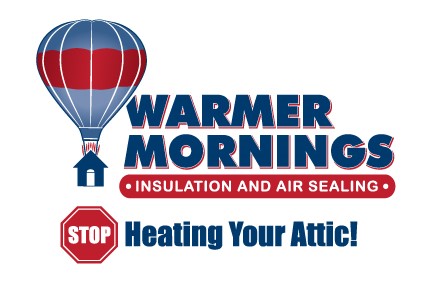Many homeowners searching the internet for crawlspace repair information end up in home repair forums. While there is some good information out there, there are many examples of bad and outdated advice related to repairing crawlspaces
1. Adding more foundation vents to the crawlspace– Old building codes and bad advice have resulted in homeowners adding more vents to their crawlspace in order to dry the high moisture content in their crawlspaces.
The thinking behind ventilation was that air circulation would force the moisture in the crawl space air to end up outside. Through testing it has been proven that warm, humid outdoor air brought into the crawl space through foundation vents in the summer can lead to increased moisture levels in the crawlspace.
Also, the air movement in a home does not move side to side through the vents, but instead upwards (Stack Effect). This Stack Effect draws air inward from every crawl space vent and up into the living space of the home.
A properly encapsulated crawlspace is the only solution to reduce high moisture levels in a crawlspace.
2. Staple a vapor barrier to the floor joists – There isn’t a single crawlspace repair mistake more responsible for wood rot and mold than when plastic is attached to the floor joist system. The thinking behind this is to stop moisture intrusion of the crawlspace air from entering the wood components.
There are many problems with this; but the most important to know is that most crawlspaces are vented and the cooler surfaces such as duct work, pipes, and the floor will condensate in the summer. The plastic will trap the condensation up against the floor structure causing mold and wood rot to occur. Floor joist repair is commonly needed after the joists are soaked with moisture.
3. Insulating a damp crawlspace with fiberglass insulation – This is another example of outdated advice resulting in mold growth. Paper faced insulation is “mold candy”. The fiberglass will absorb the moisture from the air, become heavy, and fall to the ground. Worse yet, if the insulation is stapled, it will hold moisture up against the wood components of the crawlspace.
4. Improper drainage system installations – Many crawlspaces have water standing on the ground floor after heavy rains. There are many reasons why water enters, and several solutions to prevent or remove the standing water.
The worst solution is to ignore this recurring problem or repair the problem with a standalone pit and pump. A sump pump alone cannot pump all the water that pools around the perimeter or in the middle of the crawlspace. A perimeter drain is necessary to intercept the water and facilitate it to the pump.
5. Venting the Dryer into the Crawlspace – This is only considered a repair mistake because homeowners quit trying to replace the dryer duct in the crawlspace after it breaks or clogs. This will pump gallons of water into the crawlspace air causing it to move upward into the wood components because warm air rises.
6. Insulating Heat Ducts in a Crawlspace with Fiberglass – Ducts in a vented crawlspace will condensate and the fiberglass will soak up all this excess water causing mold to grow around the duct in the fiberglass.
7. Additional Problems: Improper Gutter and Downspout Maintenance – Gutters are designed to take roof water away from your home and foundation. Allowing clogged gutters to over pour water will result in more water entering the crawlspace. The biggest mistake of all is allowing the downspouts to drain the water right up against the foundation. The downspouts should be extended at least 10′ to 15′ away from the home to prevent roof water from entering the crawlspace.
At Warmer Mornings we agree with all these observations/suggestions. We also have the solution to all the negative conditions in your crawlspace.
